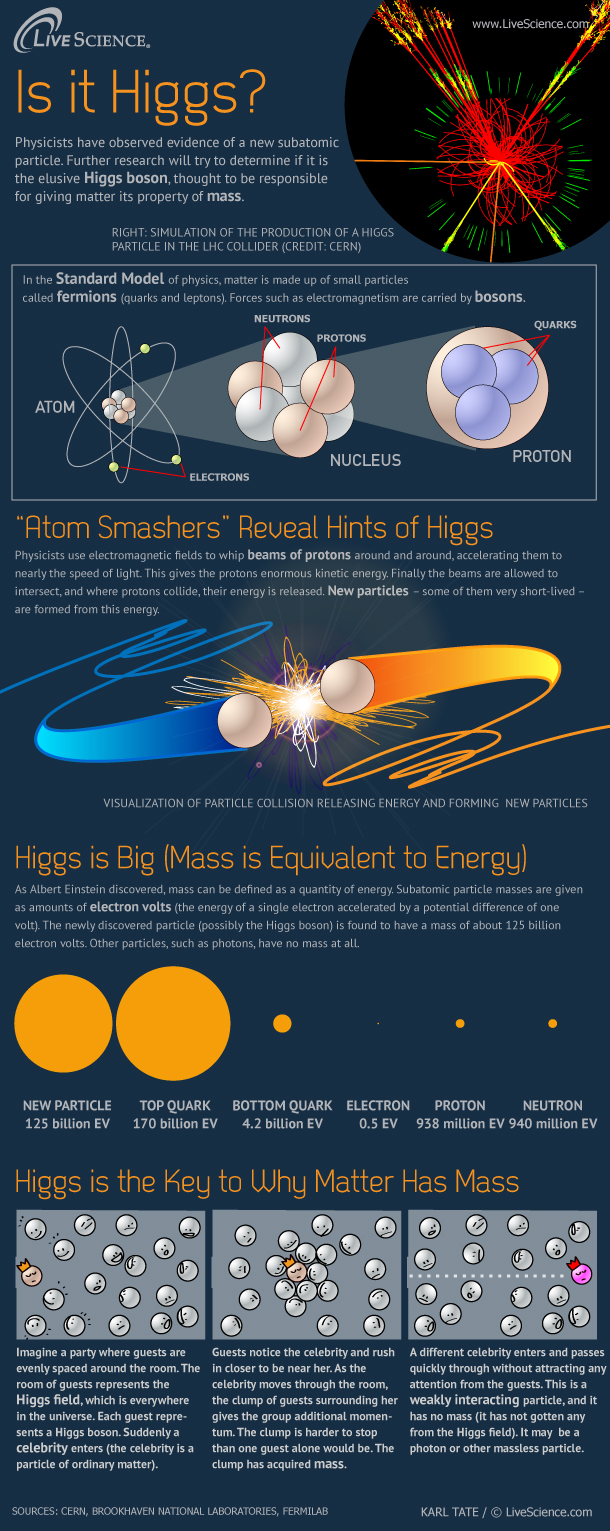Will the Real Higgs Please Stand Up? (Infographic)

Physicists working at the Large Hadron Collider (LHC) in Switzerland have observed evidence of a new subatomic particle. Further research will try to determine if it is the elusive Higgs boson, thought to be responsible for giving matter its property of mass. In the Standard Model of physics, matter is made up of small particles called fermions (including quarks and leptons). Forces such as electromagnetism are carried by bosons. Physicists use electromagnetic fields to whip beams of protons around and around, accelerating them to nearly the speed of light. This gives the protons enormous kinetic energy. Finally the beams are allowed to intersect, and where protons collide, their energy is released. New particles – some of them very short-lived – are formed from this energy. As Albert Einstein discovered, mass can be defined as a quantity of energy. Subatomic particle masses are given as amounts of electron volts (the energy of a single electron accelerated by a potential difference of one volt). The newly discovered particle - possibly the Higgs boson – is found to have a mass of about 125 billion electron volts. Other particles, such as photons, have no mass at all.
- Gallery: Search for the Higgs Boson
- Wacky Physics: The Coolest Little Particles in Nature
- 9 Unsolved Mysteries in Physics
Sign up for the Live Science daily newsletter now
Get the world’s most fascinating discoveries delivered straight to your inbox.

